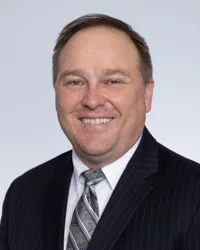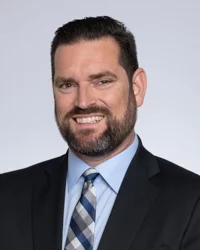Since Gov. Gavin Newsom signed Senate Bill 1159 into law on Sept. 17, many questions have abounded about how the new law’s rebuttable COVID-19 presumptions apply to administrators and employers.
The new law, which takes effect immediately, effectively created three rebuttable presumptions. The bill:
- Codified the governor’s executive order, which covers COVID-19 claims for all types of employers from 3/19/20-7/5/20.
- Created a rebuttable presumption for first responders with dates of injury on or after 7/6/20. By “first responders,” we mean firefighters, law enforcement, and many types of health care workers.
- Generated a second rebuttable presumption that applies to all employers in cases with dates of injury on or after 7/6/20 in cases where there has been an “outbreak” within 14 days of the date of injury.
If you’re unfamiliar with the basics of the law, you will want to read this blog post where we described SB 1159 in great detail after lawmakers sent the bill to the governor’s desk. Of course, the governor would later sign the bill into law on Sept. 17.
As is to be expected with any bill that is 4,000-plus-words long, the devil is in the proverbial details and things can be quite confusing.
In an effort to ease your confusion, here is a list of the most frequently asked questions we have received from our clients in response to the bill:
Do employers need to report all positive COVID-19 tests from employees?
Employers must report all positive COVID-19 tests to their third-party administrator or insurance carrier. If the employee is not alleging that the COVID-19 is work-related, then the employer cannot provide the claims administrator with any personally-identifiable information, such as the employee’s name. If the employee is alleging that COVID-19 is work-related, then the employer should provide the administrator with the applicant’s name and other personally-identifiable information.
What are the timeframes for reporting?
Because SB 1159 was signed into law on 9/17/20 and takes effect immediately, employers have up to 30 business days (10/29/20) to provide their administrator with any positive tests dating back to 7/6/20, which is the day after the executive order expired. To be clear, the employer must report any positive tests from 7/6/20-9/17/20 to the claims administrator no later than 10/29/20. For any positive tests occurring on/after 9/17/20, employers have three business days to report those to their TPA.
What information do employers need to report to their claims administrators?
Employers must report:
- That an employee has tested positive.
- The employer should not provide any personally-identifiable information regarding the employee who did test positive, unless the employee is asserting it is work-related or has filed a DWC-1 claim form.
- If the employee later claims that the positive COVID-19 test was industrially related, then the employee’s name and identifying information may be provided to the claims administrator.
- The date of the positive test. This is the date that the sample was taken, not the date of the test result.
- The specific address of the place of employment.
- The highest number of employees who worked at that same place of employment in the last 45 days.
- Employers need to keep records that keep track of the aforementioned information.
Claims administrators are supposed to take this information and determine if an outbreak has occurred.
Are there different reporting requirements for employers based on the date of injury?
The answer is yes – under SB 1159, employers do not have to report to carriers every positive test result prior to 7/6/20. They do have to report all positive tests that occurred on/after 7/6/20 to their claims administrators. For those employers who are reporting claims between 7/6/20-9/17/20, they should report the highest number of employees who worked at that location between 7/6/20-9/17/20.
What businesses/employees does the presumption apply to?
The “outbreak” section (LC 3212.88) and the Executive Order section (LC 3212.86) of the statute apply to all employers. The police/fire/health care workers section (LC 3212.87) applies to police departments, firefighters, and a wide variety of health care workers. Those health care workers are either RNs and EMTs, or employees who have direct contact with COVID-19 patients.
What constitutes an “outbreak”?
First, in order to have an “outbreak,” the employer must have 5 or more employees.
Next, an “outbreak” is best defined by the “Four or Four” Rule, which says:
- If the employer has less than 100 or fewer people at a location, four (4) employees must test positive for COVID-19 in a 14-day period, OR
- If the employer has more than 100 employees at a specific place of employment, 4% of the employees at a particular facility testing positive for COVID-19 in a 14-day period.
That outbreak must occur within 14 days of the applicant’s positive test. Please note that the date the employee got the test may be different than their last day of work.
Why do employers have to report all this data?
So the claims administrator can determine whether or not there was an outbreak at the employer’s specific employment location. For instance, while there may not be enough claims to qualify for an outbreak today, a claims adjuster may have to revisit this data if new claims come to light in the future to determine if there is an outbreak.
When does the employer have to offer a DWC-1 form to the employee who has the virus?
We continue to use same standard to provide the claim form as outlined by the Honeywell case. If the employer knows there is an industrial injury (thus, mere knowledge of an infection doesn’t do the trick), or when the employee states that they believe the exposure to COVID occurred at work, or the employee asks for a claim form.
The Supreme Court in Honeywell held that “Section 5402’s 90-day period for denial of liability runs only from the date the employee files a claim form, not from the date the employer receives notice or knowledge of the injury or claimed injury.” The court specifically held that if an employer “reasonably certain” that there was an AOE/COE injury is not the trigger for the 90-day denial period to begin.
The Supreme Court remanded the matter to the WCAB to determine if there was evidence to establish an estoppel precluding Honeywell from asserting the defense.
Thus, there are ways for applicants to sidestep the requirement that a claim form be filed before the SOL clock starts ticking, but they are a difficult standard. The foregoing notwithstanding, if it appears that an employee’s condition meets the criteria for a rebuttable presumption per the new legislation, we strongly recommend providing a claim form. Remember: even if a claim form is provided, the time for a denial to issue only starts clicking once the form has been returned.
If the location of work includes multiple employers, will the outbreak take into account all the employees in that location, no matter under what employer they are, i.e. construction project, or janitors servicing a location?
Based on a plain reading of the legislation in SB 1159, the statute ONLY refers to co-workers of the employer, not co-workers employed by other companies. So when calculating an outbreak, the plain language of the legislation states that only the employees of the employer are to be counted.
For example, if Superman Janitorial Services sends 10 janitors to clean an office building with 5,000 employees, and one of Superman’s janitors tests positive for COVID-19 a few days later, the claims adjuster would only consider the 10 janitors when determining whether there was an outbreak. The claims adjuster would not consider the 5,000 office building employees, as long as those 5,000 people are employees of a different business than Superman Janitorial Services.
Considering that firefighters, law enforcement, and health care workers have their own rebuttable presumption statute under LC 3212.87, do employers in those fields still have to comply with the “outbreak” reporting requirements and report any positive tests to their claims administrators?
Yes. It is important to note that there is no exclusion that permits firefighters, law enforcement or health care industries to ignore the reporting requirements. Lawmakers may have done this to ensure that the outbreak statute (LC 3212.88) applies to people who work for those same employers who are not firefighters, law enforcement, or health care workers. (Ex: A receptionist at a police station or hospital may not be covered under LC 3212.87, but could be covered under LC 3212.88’s “outbreak” provisions.)
The questions and answers in this article was written by The Law Offices of Bradford & Barthel’s COVID-19 Response Team, which includes John P. Kamin, Zane P. Uribarri, and Patrick Gorman, all of whom are experienced workers’ compensation defense attorneys at the Law Offices of Bradford & Barthel. If you have questions about coronavirus cases or any other workers’ compensation defense issues, please feel free to contact us.
Viewing this website does not form an attorney/client relationship between you and Bradford & Barthel, LLP or any of its attorneys. This website is for informational purposes only and does not contain legal advice. Please do not act or refrain from acting based on anything you read on this site. This document is not a substitute for legal advice and may not address every factual scenario. If you have a legal question, we encourage you to contact your favorite Bradford & Barthel, LLP attorney to discuss the legal issues applicable to your unique case. No website is entirely secure, so please be cautious with information provided through the contact form or email. Do not assume confidentiality exists in anything you send through this website or email, until an attorney/client relationship is formed..



